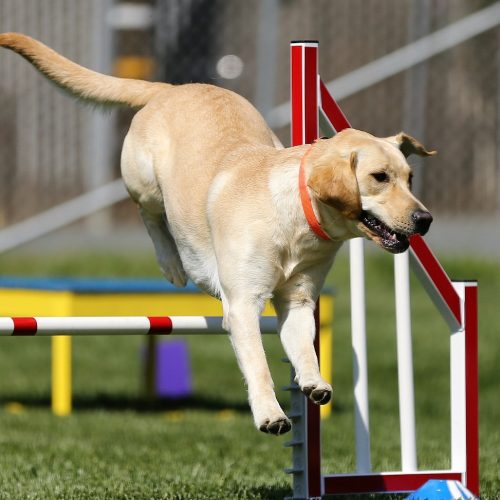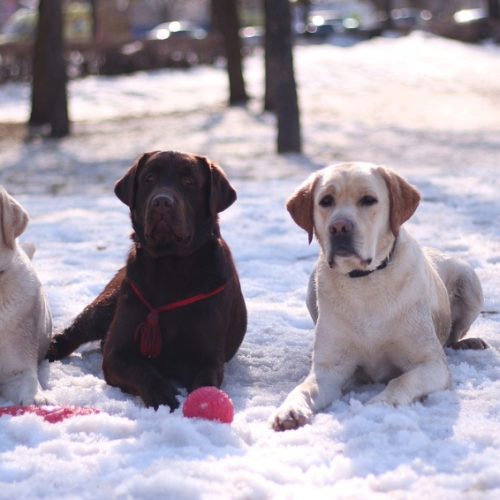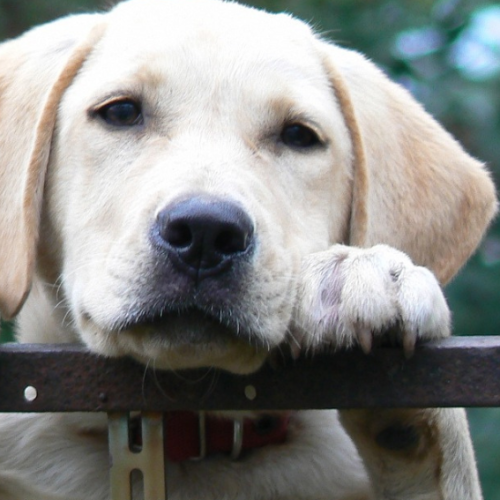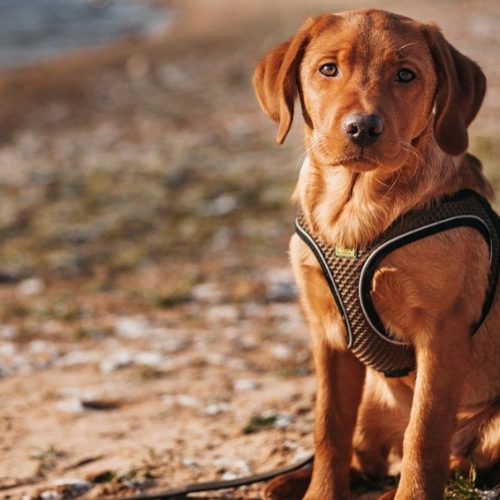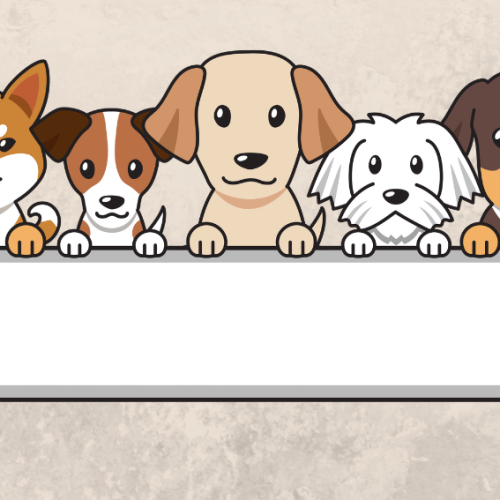Labrador Retrievers, affectionately known as Labs, are among the most popular dog breeds worldwide. Their friendly nature, intelligence, and versatility make them ideal pets, working dogs, and companions. This guide will delve into the Labrador breed standards, focusing on their size, color, and coat. Additionally, we’ll explore various Labrador mixes that add diversity to this beloved breed.
Introduction to Labrador Breed Standards
Breed standards are established guidelines that describe the ideal characteristics of a dog breed, including appearance, behavior, and temperament. For Labrador Retrievers, these standards are set by major kennel clubs such as the American Kennel Club (AKC) and the United Kennel Club (UKC). Understanding these standards helps breeders maintain the breed’s integrity and assists potential owners in recognizing a purebred Labrador.
Size and Proportions
Labrador Retrievers are medium to large-sized dogs with a muscular, athletic build. The breed standards for size and proportions are as follows:
Height and Weight
– Males: Typically stand between 22.5 to 24.5 inches (57 to 62 cm) at the shoulder and weigh between 65 to 80 pounds (29 to 36 kg).
– Females: Generally stand between 21.5 to 23.5 inches (54 to 60 cm) at the shoulder and weigh between 55 to 70 pounds (25 to 32 kg).
The breed’s height should be measured at the withers, the highest point of the shoulders. The ideal weight can vary based on the dog’s activity level, build, and overall health.
Proportions and Balance
Labradors should exhibit a balanced appearance, with the length of the body from the shoulder to the buttocks slightly longer than the height at the withers. The chest should be deep and broad, providing ample lung capacity for stamina and endurance. The back should be firm and level, with a slight slope from the withers to the tail.
Color
Labrador Retrievers come in three primary colors: black, yellow, and chocolate. Breed standards define specific characteristics and acceptable variations for each color.
Black
– Description: Black Labradors are solid black. A small white spot on the chest is permissible but not preferred.
– Coat: The coat should be shiny and uniform in color. The black should be rich and deep, without any brown or gray tones.
Yellow
Description: Yellow Labradors range from pale cream to fox red. The color spectrum includes various shades of yellow, and breed standards do not prefer one over the other.
– Coat: The coat should be uniform, with possible lighter shading on the underparts and the back of the legs. The ears and back may be slightly darker.
Chocolate
– Description: Chocolate Labradors range from light to dark chocolate brown. Like black Labradors, a small white spot on the chest is permissible.
– Coat: The coat should be rich and even in color, without any lighter or darker patches.
Coat: One of a Labrador Retriever’s defining features is its coat. It is designed to protect in various weather conditions, particularly for water activities.
Texture and Length
– Outer Coat: The outer coat is short, dense, and straight. It lies close to the body and feels hard to the touch. The outer coat’s primary purpose is to repel water and provide insulation.
– Undercoat: Labradors have a soft, weather-resistant undercoat that provides additional insulation and keeps them warm in cold water and weather.
Grooming and Maintenance
Labradors are relatively low-maintenance when it comes to grooming. However, regular brushing is essential to remove loose hairs and maintain the coat’s health. More frequent brushing may be necessary during shedding seasons, typically in the spring and fall.
Labrador Mixes
Labrador Retrievers are often mixed with other breeds, resulting in various Labrador mixes. These mixes can inherit traits from both parent breeds, leading to diverse appearances and temperaments. Here are some popular Labrador mixes:
Labradoodle
– Mix: Labrador Retriever and Poodle
– Description: Labradoodles are known for their curly or wavy coats, which can be low-shedding and hypoallergenic. They are intelligent, friendly, and energetic, making them excellent family pets and service dogs.
Goldador
– Mix: Labrador Retriever and Golden Retriever
– Description: Goldadors blend two of the most popular retriever breeds. They are gentle, loyal, and easy to train, with a friendly and outgoing personality. Their coats can be short like a Labrador’s or slightly longer like a Golden Retriever’s.
Labmaraner
– Mix: Labrador Retriever and Weimaraner
– Description: Labmaraners have sleek, short coats and are athletic and energetic. They are intelligent and trainable but require plenty of exercise and mental stimulation.
Labrabull
– Mix: Labrador Retriever and American Pit Bull Terrier
– Description: Labrabulls are solid and muscular, with a short, dense coat. They are loyal and protective, often forming strong bonds with their families. Socialization and training are essential to ensure a well-rounded temperament.
Labsky
– Mix: Labrador Retriever and Siberian Husky
– Description: Labskies are striking dogs with a mix of Labrador’s friendly nature and Husky’s energetic and independent traits. They often have striking blue or multicolored eyes and a thick coat that requires regular grooming.
Borador
– Mix: Labrador Retriever and Border Collie
– Description: Boradors are highly intelligent and energetic, with a strong herding instinct from the Border Collie side. They excel in obedience and agility activities and require ample mental and physical exercise.
Boxador
– Mix: Labrador Retriever and Boxer
– Description: Boxadors are playful and energetic, with a muscular build and a short coat. They are loyal and protective, making them excellent family pets with proper training and socialization.
Spanador
– Mix: Labrador Retriever and Cocker Spaniel
– Description: Spanadors are friendly and affectionate, with a medium-length coat that may require regular grooming. They are intelligent and eager to please, making them easy to train.
Dalmador
– Mix: Labrador Retriever and Dalmatian
– Description: Dalmadors are unique dogs with the playful and friendly nature of a Labrador and the distinctive spots of a Dalmatian. They are energetic and require regular exercise to stay healthy and happy.
German Sheprador
– Mix: Labrador Retriever and German Shepherd
– Description: German Shepradors are intelligent, loyal, and protective. They often inherit the strong work ethic of both parent breeds, making them excellent working dogs and loyal family companions.
Detailed Examination of Labrador Breed Standards
Head
The head of a Labrador Retriever should be broad with a well-defined stop (the area where the forehead meets the nose). The skull should be broad without exaggerated features. Eyes should be medium-sized and set apart, giving a friendly and intelligent expression. The ideal eye color is brown or hazel. The ears should be set slightly above the eye line, hanging close to the head, and not too large or heavy.
Muzzle and Nose
The muzzle of a Labrador should be strong and not too long, with a proportionate width and depth. The nose should be broad with well-developed nostrils, aiding in their excellent sense of smell. The nose color typically matches the coat color: black Labradors have black noses, chocolate Labradors have brown noses, and yellow Labradors can have black or brown noses.
Mouth and Bite
Labradors have strong jaws and a perfect, regular scissor bite, meaning the upper teeth closely overlap the lower teeth, and both teeth are set square to the jaw. The lips should be clean and not too loose.
Neck, Topline, and Body
Neck
The neck of a Labrador should be strong, muscular, and well set into the shoulders. It should be medium in length, providing balance and strength.
Topline and Back
The topline should be level from the withers to the croup. The back should be strong and well-muscled, with no dip or rise.
Chest and Ribcage
The chest should be of good width and depth, extending to the elbows. The ribs should be well sprung, giving a barrel-shaped appearance that provides room for adequate lung capacity.
Tail
One of the hallmark features of a Labrador Retriever is its tail, often described as an “otter tail.” The tail should be thick at the base, gradually tapering to the tip. It should be of medium length, reaching approximately to the hock. The tail is covered with short, dense fur and should be carried straight, not curling over the back.
Forequarters and Hindquarters
Forequarters
The forequarters should have well-laid-back shoulders, forming a clear angle with the upper arm. The legs should be straight, with strong bones and well-muscled muscles. The elbows should be close to the body, allowing free movement.
Hindquarters
The hindquarters should be broad, muscular, and well-developed. The stifles should be well bent, and the hocks should be strong and well let down, providing a powerful drive.
Feet
The feet should be compact, with well-arched toes and thick pads, aiding in the breed’s ability to work in various terrains. The feet should point straight forward.
Movement
Labrador Retrievers should exhibit free, effortless movement. They should have a long stride, with good reach in the forequarters and a strong drive from the hindquarters. The movement should be smooth and balanced, reflecting their ability to cover ground efficiently.
Temperament
Labradors are known for their excellent temperament. They should be friendly, outgoing, and eager to please. Aggressiveness or shyness is not typical of the breed. Labradors should be good-natured and friendly with humans and other animals.
Detailed Look at Labrador Mixes
Physical and Behavioral Traits of Labrador Mixes
Labrador mixes inherit traits from both parent breeds, leading to diverse appearances and temperaments. Here, we will delve deeper into some of the more popular Labrador mixes, focusing on their unique characteristics.
Labradoodle
– Physical Traits: Labradoodles can vary significantly in appearance depending on which parent they take after. Common traits include a curly or wavy coat, which can be low-shedding, and a medium to large build.
– Behavioral Traits: Labradoodles are known for their intelligence and friendly demeanor. They are energetic and require regular exercise and mental stimulation.
Goldador
– Physical Traits: Goldadors typically blend Labrador and Golden Retriever features, such as a medium-length coat, often with a slight wave. They are usually large and muscular.
– Behavioral Traits: Goldadors are gentle, loyal, and highly trainable. They are excellent with children and other pets, making them ideal family dogs.
Labmaraner
– Physical Traits: Labmaraners often have the sleek, athletic build of a Weimaraner, combined with the muscularity of a Labrador. Their coat is usually short and dense.
– Behavioral Traits: These dogs are energetic and require plenty of exercise. They are intelligent and can be strong-willed, requiring consistent training.
Labrabull
– Physical Traits: Labrabulls tend to be muscular and strong, with a short, dense coat. Their appearance can vary widely, often combining a Pit Bull’s stocky build with a Labrador’s athleticism.
– Behavioral Traits: Labrabulls are loyal and protective, often forming strong bonds with their families. Early socialization and training are essential to ensure a well-rounded temperament.
Labsky
– Physical Traits: Labskies often have striking blue or multicolored eyes, a thick double coat, and a build that combines a Labrador’s robustness with a Husky’s athleticism.
– Behavioral Traits: Labskies are energetic and independent. They require plenty of exercise and mental stimulation and may exhibit a strong prey drive.
Borador
– Physical Traits: Boradors typically have the build of a Labrador with the distinctive markings of a Border Collie. They are medium to large-sized, with a coat that can range from short to medium length.
– Behavioral Traits: Boradors are highly intelligent and energetic. They excel in activities that challenge their minds and bodies, such as agility and obedience training.
Boxador
– Physical Traits: Boxadors, with a short coat, are usually muscular and sturdy. They can have the expressive face of a Boxer combined with the Labrador’s friendly demeanor.
– Behavioral Traits: Boxadors are playful and energetic. They are loyal and protective, making them excellent family pets with proper training and socialization.
Spanador
– Physical Traits: Spanadors often have a medium-length coat that requires regular grooming. Their size can vary but is generally medium, combining the Labrador’s sturdiness with the Cocker Spaniel’s softer features.
– Behavioral Traits: Spanadors are affectionate and eager to please. They are intelligent and trainable, making them great companions for families and individuals.
Dalmador
– Physical Traits: Dalmadors typically have the distinctive spots of a Dalmatian combined with the robust build of a Labrador. Their coat is short and dense.
– Behavioral Traits: Dalmadors are energetic and playful. They require regular exercise and mental stimulation to stay happy and healthy.
German Sheprador
– Physical Traits: German Shepradors often blend Labrador and German Shepherd features, including a muscular build and a medium to short coat. They can have the Shepherd’s distinct facial markings.
– Behavioral Traits: German Shepradors are intelligent, loyal, and protective. They require consistent training and socialization to ensure they are well-behaved and confident.
Health and Lifespan of Labrador Mixes
Labrador mixes can inherit health traits from both parent breeds. It is essential to be aware of common health issues affecting these dogs and take preventive measures to ensure their well-being.
Common Health Issues
Hip and Elbow Dysplasia: Labradors and many other breeds are prone to hip and elbow dysplasia, which can lead to arthritis and mobility issues.
– Eye Conditions: Progressive Retinal Atrophy (PRA) and cataracts are common in many breeds, including Labradors and their mixes.
Obesity: Labradors tend to gain weight if they are not properly exercised and fed a balanced diet, a trait that can be passed on to their mixes.
Lifespan
The lifespan of Labrador mixes can vary depending on the specific breeds involved. On average, most Labrador mixes can live between 10 to 15 years. Regular veterinary care, a balanced diet, and ample exercise are crucial for maintaining their health and longevity.
Conclusion
Labrador Retrievers are a beloved breed known for their friendly demeanor, intelligence, and versatility. The breed standards for size, color, and coat help maintain the integrity and quality of purebred Labradors. Additionally, the various Labrador mixes bring unique traits and characteristics, offering dog lovers a wide range of options.
Whether you are drawn to the classic Labrador Retriever or one of the many Labrador mixes, these dogs offer companionship, loyalty, and a lifetime of joy. Understanding their breed standards and specific needs ensures you can provide your furry friend the best care and environment.
By appreciating the diversity and unique qualities of Labradors and their mixes, we celebrate this remarkable breed’s rich heritage and enduring popularity.

